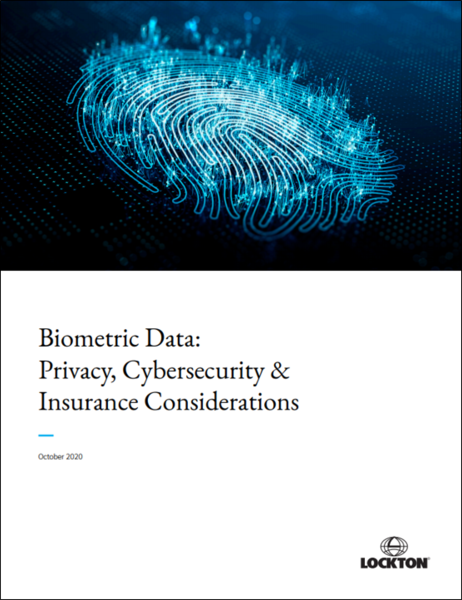 Download Paper (opens a new window)
Download Paper (opens a new window)
As the world becomes more digitally connected and as technology advances, gathering, using, and storing biometric data will continue to present unique privacy and cybersecurity challenges.
Many organizations utilize biometric data for authentication purposes. From facial imaging to fingerprinting, it’s important to understand the risks associated with handling this data. Once risks are understood, organizations can start to take the appropriate steps towards privacy protection and risk mitigation.
Regulatory and compliance laws should also be taken into consideration when handling biometric data. While there is no U.S. federal biometric data protection law at this time, the National Biometric Information Privacy Act was just introduced in the United States Senate in August 2020. Additionally, there are many jurisdictions that have enacted specific biometric data protection laws.
Given the multiple layers of potential compliance obligations, organizations must assess their legal compliance responsibilities at the local, state, federal, and international levels. We invite you to join experts from Lockton, Lewis Brisbois, and the U.S. Secret Service on October 15 for a live webcast (opens a new window) discussion on how to continually evaluate privacy protection programs and the ever-changing landscape of compliance laws.
Finally, a good cyber insurance policy will provide coverage for any inevitable or unforeseen privacy violations. Considering the multiple insurance implications, it is critical to ensure your organization’s chosen insurance program is designed with your unique and individual risks in mind.
Download the full Biometric Data: Privacy, Cybersecurity & Insurance Considerations (opens a new window) white paper for a detailed look into the risk factors, compliance obligations, and our suggested information security implementations to ensure your organization is protected and prepared to collect, use, and store biometric data.


